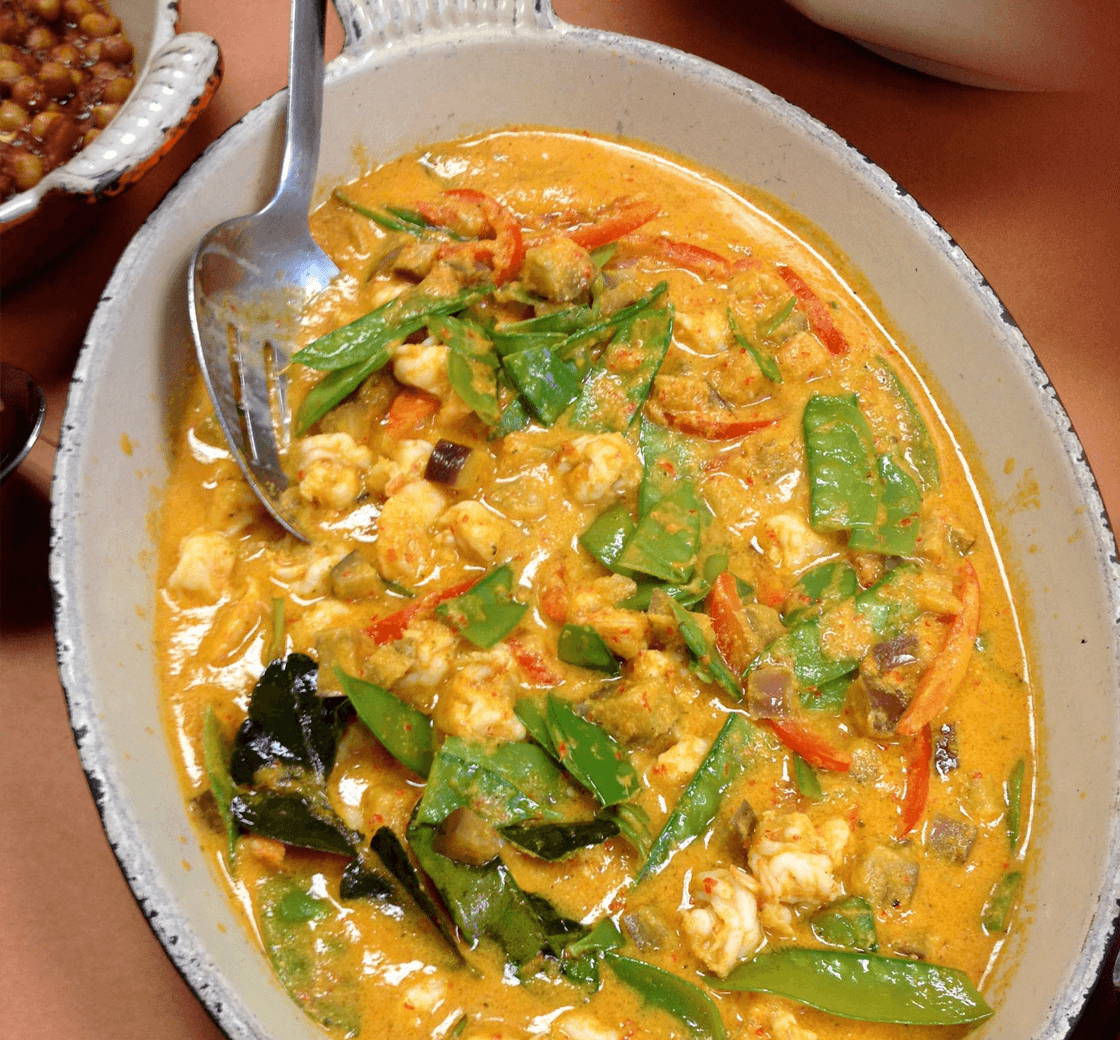
From the Portuguese-influenced cuisine of Goa to the wonderful sweets of Bengal, Indian cuisine has multiple regional variations, and is generally characterized by perfect spice and flavor combinations. You will learn to identify these spices, along with shopping and storing tips, and will make a masala spice blend. Your menu is vegetarian and will consist of: pakora; cilantro-coconut chutney; goobi (cauliflower) tikka masala; saag paneer and pulao (rice pilaf ).

You will work in teams to execute the class menu. At the end of class, participants gather to enjoy the food they have prepared. Wine is served with meals in most classes. All class menus are subject to change. While a snack platter is offered in both morning and evening classes, you may want to consider a light snack before joining us for class. Students are encouraged to bring a light lunch or dinner to all pastry classes.

You will work in teams to execute the class menu. At the end of class, participants gather to enjoy the food they have prepared. Wine is served with meals in most classes. All class menus are subject to change. While a snack platter is offered in both morning and evening classes, you may want to consider a light snack before joining us for class. Students are encouraged to bring a light lunch or dinner to all pastry classes.
There's nothing like handmade pasta's flavor and texture, and in this class, we'll have a blast leaning how to make fresh handmade pasta, stuffed pasta, perfect sauces and all the accompaniments! There's nothing like handmade pasta's flavor and texture. Together, we'll learn to make dough the Old World way, then how to shape, cut and stuff it. You and your partner will create a complete fresh Italian dinner of: pappardelle with Bolognese; burro e salvia (butternut squash ravioli with sage butter).
Elevate your Indian cooking skills with our "Essentials of Indian Cooking II" class. Explore the diverse flavors of India as you learn to prepare an authentic menu of Whole Wheat Chapati, Rogan Josh, Saucy Shrimp Vindaloo, Tadka Dal, Fragrant Cumin Rice Pulao , and Mango Lassi. Our expert chef will guide you through the techniques and ingredients that make Indian cuisine so flavorful and aromatic.
While handling poultry can seem daunting, it really can be a clucking good time! In Knife Skills 2 you'll discover the fundamental techniques required to transform a whole chicken into popular cuts. We'll cover such topics as trussing and spatchcocking, ensuring you leave with the confidence to tackle any chicken preparation in your home kitchen. No matter how you feel when you enter the class, the class promises to enhance your knowledge of poultry preparation and take your skills to the next level. While not a requirement, it helps to have practiced the skills of Knife Skills 1 before taking this class.
In this fun-focused class, kids and their parents will spend a morning or evening making, and then eating, all kinds of pizza. You'll work together to make, construct and bake: pizza dough; tomato sauce; pizza toppings including prosciutto, fresh herbs and sautéed vegetables; and dessert pizza. *Limit 2 children per adult. All children and teens must be accompanied by an adult. Everybody attending class must be registered.*
Ranked as America’s Best Culinary School (USAToday 2019), our roster of Chef-Instructors have run top kitchens around the globe.
| (Separate multiple addresses with commas like: john@aol.com, jane@aol.com) | |